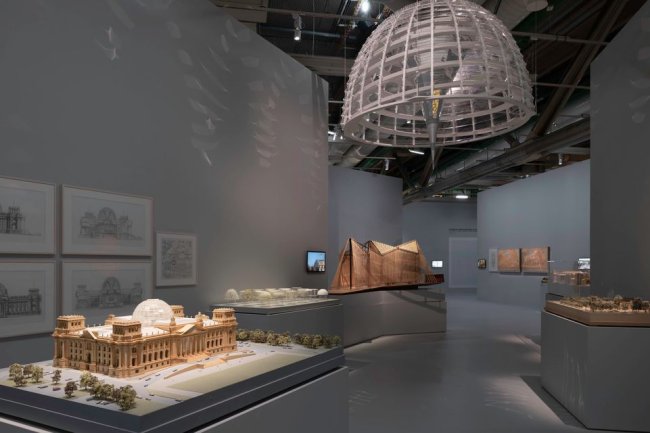‘The Science of Spin’ Review: The World in a Whirligig
From early on, humanity’s key inventions involved rotation: grindstones, potter’s wheels, treadmills, pumps. The wheel, though, has been overrated. Photo: Alamy Stock Photo By James B. Meigs July 31, 2023 6:19 pm ET More than a few authors have found success with books that look at a broad swath of history, ideas or science through the lens of a single topic. The trend might have begun with James Gleick’s “Chaos” (1987), which explored the surprising role of randomness in nature. Less abstractly, Mark Kurlansky took a tight-focus approach in “Cod” (1997) and Mary Roach in “Stiff” (2003), a book about, of all things, cadavers. Roland Ennos elevates this approach to dizzying heights in “The Science of Spin.” The notion that lots of things spin—everything from toy tops to hurricanes—might seem pedestrian. But Mr. Ennos, a prof


Photo: Alamy Stock Photo
More than a few authors have found success with books that look at a broad swath of history, ideas or science through the lens of a single topic. The trend might have begun with James Gleick’s “Chaos” (1987), which explored the surprising role of randomness in nature. Less abstractly, Mark Kurlansky took a tight-focus approach in “Cod” (1997) and Mary Roach in “Stiff” (2003), a book about, of all things, cadavers.
Roland Ennos elevates this approach to dizzying heights in “The Science of Spin.” The notion that lots of things spin—everything from toy tops to hurricanes—might seem pedestrian. But Mr. Ennos, a professor of biological sciences at the University of Hull, wants us to understand that spin is fundamental. It plays a part in the functioning of our bodies and the design of our infrastructure. It can also, of course, be found in the orderly motion of our planet and, indeed, of the universe. Mr. Ennos hopes that “The Science of Spin” will enable readers to “finally be able to understand what really makes the world go round.”
He begins by recounting how British engineers underestimated the power of spin when designing the groundbreaking Sopwith Camel biplane during World War I. In a traditional aircraft, the motor is mounted to the fuselage and spins a shaft with a propeller at one end. In the Camel,the shaft was locked to the airframe while the entire motor spun furiously, along with a conjoined propeller. This odd design had several advantages and one big disadvantage: The enormous rotational force of the motor tended to send inexperienced pilots into rapid death spirals.
Having chastened the reader not to take the physics of spin lightly, Mr. Ennos rewinds his story roughly to the beginning of time. We learn how the big bang “formed huge swirls in the clouds of gas that it produced.” The eddies acted as nuclei for the formation of stars, galaxies and all the rest. “Spin,” he writes, “is the very reason our universe is here at all.”
Mr. Ennos endeavors to persuade us—the Sopwith Camel episode aside—to be thankful that our universe has so much spinning in it. The chaotic cloud of gas that evolved into our orderly solar system could have done so only by spinning. We are particularly blessed by the way our home planet spins at just the right speed. Its rotation creates Earth’s magnetic envelope, which keeps us safe from deadly solar radiation. On Earth’s surface it seems that everything from the atmosphere to ocean currents is in a state of spin, constant mixing and stirring processes that moderate temperatures, reduce wind speeds and regulate rainfall. In short, spin makes the world “a marvelous place in which to live.”
Mr. Ennos really gets rolling when he describes how much of human flourishing through history has involved harnessing the power of spin. We learn how Paleolithic people used bow drills—wooden spindles that could be spun rapidly by a loosely strung bow—to start fires, drill the holes needed for making tools and even perform simple dentistry. Finding new ways to spin things made early civilization possible: Winding cotton and wool fibers into thread allowed us to start wearing fabrics instead of animal skins. Long before the Industrial Revolution, humanity’s crucial inventions usually involved rotation: grindstones, potter’s wheels, treadmills and all manner of pumps.
Not that Mr. Ennos’s story is simple tech triumphalism. Contrarians especially will enjoy his account of what he calls “the underwhelming wheel.” People often regard the invention of the wheel as the paradigm of a world-changing innovation. In fact, Mr. Ennos says, wheels—at least the kinds used for transportation—weren’t all that useful through most of human history. Before the development of engineered roads, the ground was just too rough to make wheeled transport much of an improvement over walking or riding on horseback. The Incas, Mayans and Aztecs created toys that rolled on four wheels, Mr. Ennos notes, but they never created adult-size versions. Without metal tools, it wasn’t possible to make durable wheels out of wood.
The pace of Mr. Ennos’s narrative quickens with the advent of the Industrial Revolution. Water wheels power cotton gins and weaving machines, and turbines spin faster still. Steam engines evolve year by year as an increasingly mobile power source, until steam is supplanted by diesel and gasoline. Trying to keep up may leave some readers’ heads, well, spinning.
Mr. Ennos’s final chapters explore the ways in which humans embody rotational mechanics in work and leisure. We see how pitchers and golfers wind up before unspooling as much energy as possible into the balls they put in play. Mr. Ennos wants us to understand the human body as a sort of machine, one with hinges and levers that amplify rotational forces. Our “complex jointed bodies,” he says, are in many ways superior to mechanical systems.
“The Science of Spin” moves too fast to spend much time getting to know the people behind the story. When Mr. Ennos discusses figure skating, for instance—a sport that seems to be almost nothing but spin—he breaks down what happens when a skater pulls in her arms to accelerate rotation. The physics are fascinating. But one wishes that he had interviewed a figure skater to ask: How does it feel?
Mr. Ennos closes by bemoaning the fact that many scientists lack an “intuitive feel for the science of spin.” Too often, he says, they turn to equations to model the behavior of spinning objects when they should start with close observation. School children, he argues, should be given more time to experiment with tops and gyroscopes. These simple toys can teach us about the beautifully balanced, dynamic nature of our universe. And, whether we are tossing a Frisbee or designing an airplane, that’s something we should all take a little time to appreciate.
Mr. Meigs is the former editor of Popular Mechanics and a senior fellow at the Manhattan Institute.
What's Your Reaction?






















